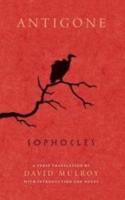
Wisconsin (2013) p/b 96pp £8.95 (ISBN 139780299290849)
M. firmly sets out ‘to do justice to the rhythmic character of the spoken passages by using a strict iambic pentameter, while conveying the musicality of the songs by using short, rhymed stanzas.’ (p.ix). In other words, M.’s aim is to animate the musical and performative element of the ancient text, re-animate how it would have been performed in antiquity with rhythm and pulse, removing the mundanity of most motionless translations of ancient Greek drama. The impact of this lyrical composition is that the ancient stage is brought to the modern era and vividly transferred to modern performers, dancers and—ultimately—to the modern audience.
Suddenly the student of Greek performance is reminded that, unlike modern renditions of Sophocles or indeed the spoken words of modern plays more generally, metre influences and transforms the meaning of the performance. M., to capture the ancient stage, has brought to life the technicalities of the ancient language and through the vernacular has allowed the student an appreciation of the compositional sophistication of Sophocles’ metre.
M. throughout the translated text provides informed notes about a range of topics and themes, such as: stage directions (pp. 2, 9), language (pp. 4, 20, 32), textual comparisons (p.6), background myths (pp. 10, 33, 44, 46), information about the gods (pp. 11-12), Greek customs and laws (pp. 25, 28, 47, 49). These notes aid the readers understanding of the cultural, religious and historical context of the play, as well as allowing the reader a glimpse at modern reception. For example, M. encourages the modern audience to appreciate the gravitas and centrality of core cultural values, such as divine laws, role of the gods, heroism, and how fundamental these values would have been to the ancient audience.
However, much of M.’s volume is not so much taken up by the translated text itself, but by the introduction and appendices. It is unclear why appendix 1 and 2 appear after the translated play, as the function of these latter sections seem to provide an extended version of the introduction. For example, in the introduction, M. offers a discussion on Oedipal myth and synopsis of the story, followed by a discussion on ancient history from 1200-300 BC, before returning again to the mythological elements in the Antigone (xxvii). The introduction’s finale refers to the Greek theatre, use of masks and theatrical festivals. Whilst all of this information is interesting and insightful, the presentation and ordering of the introduction could have been better arranged with the concerns of the appendices being absorbed at this point.
However, the ordering of the book is a very minor point to raise and, in fact, comes down to preference. It ought not to be over-looked that for a short volume this book packs a dramatic punch. M. offers any reader an informed, astute, insightful and lively volume. In short, this volume is excellent in its capture of antiquity and modern presentation and would be most useful as an introduction to Greek theatre to all students of Sophocles.
Dr Sam Newington—University of Aberdeen
